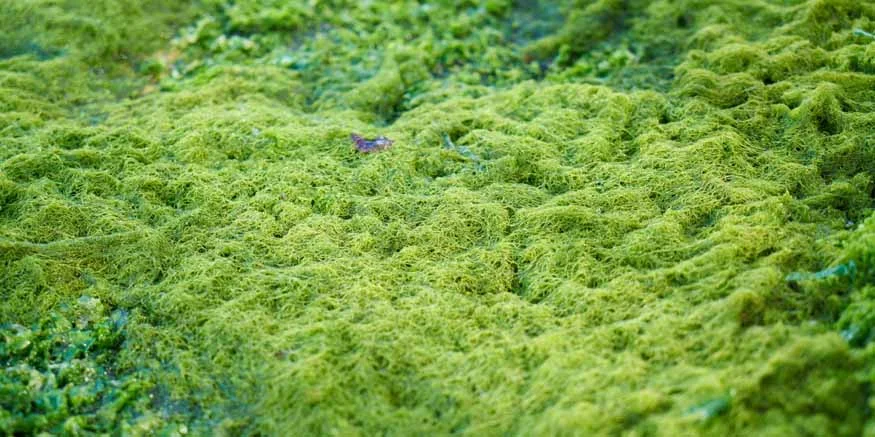Algae are microscopic organisms that are phototrophic in nature, similar to plants, and can produce their own food. These organisms are predominantly found in aquatic habitats and are often visible as algal blooms on water bodies, which contribute to eutrophication.
In today’s world of sustainable energy, the demand for safe and green fuel has become increasingly important. Algae, which are abundantly available in nature, have emerged as a promising candidate for sustainable green fuel.
Photosynthesis: An Asset to Mankind
Photosynthesis is the process by which organisms use carbon dioxide and water to synthesise their own food in the presence of chlorophyll and sunlight, producing glucose, a source of energy, and oxygen as a by-product.
Some algae store energy in the form of natural oils, which can be extracted and converted into biofuels. Algae have the potential to produce 60 to 300 times more biofuel than other plants. This remarkable capacity makes them highly suitable for biofuel production.
Common Algae Species Used in Biofuel Production
- Chlorella vulgaris: A green alga that grows easily and has a high carbohydrate content, making it ideal for biofuel extraction.
- Botryococcus braunii: Known for producing and storing large quantities of bio-oils.
- Chlamydomonas reinhardtii: Another frequently used species for bio-oil extraction.
The Advantages of Algae as a Biofuel Source
Algae offer a multitude of advantages over other biofuel sources:
- Easy to Cultivate: Algae can grow in freshwater, saltwater, and even wastewater, promoting water conservation and reducing the strain on potable water resources.
- Carbon-Neutral Fuel: Algae require carbon dioxide for photosynthesis, helping to reduce greenhouse gases and lowering the planet’s carbon footprint compared to fossil fuels like petrol and diesel.
- Rapid Growth: Algae can double their biomass in just 24 to 26 hours, making large-scale production feasible in a short amount of time.
- Versatile: Algae-derived bio-oils can replace fuels such as diesel, petrol, jet fuel, bioethanol, and other biofuels, making algae a highly versatile energy source.
- High Oil Yield: Under optimal cultivation conditions, algae can produce significant amounts of oil, which can be processed into biodiesel, jet fuel, and other biofuels.
Steps Involved in Biofuel Production
- Cultivation: Selected strains of algae are grown in large ponds or bioreactors, which are supplied with adequate light, temperature, nutrients, and other necessary conditions. Continuous mixing ensures uniform growth.
- Harvesting: The algal biomass is collected and separated from water through filtration and centrifugation.
- Pretreatment: The harvested biomass is pretreated to remove excess moisture and prepare it for the next step.
- Extraction: Bio-oils are extracted from the biomass using chemical methods (such as solvent or enzymatic extraction) or mechanical methods.
- Conversion: The extracted oils undergo a process called transesterification, where the oil reacts with alcohol (e.g., methanol) to form biodiesel.
- Purification: The biofuel is purified to ensure it meets the required standards and can be used in engines without modification.
Benefits of Using Algal Biofuels
- High Yield: Algae can produce a significantly larger quantity of fuel per acre than crops like corn.
- Quick Turnaround Time: Algae have a doubling time of approximately 26 hours, compared to weeks or months for crop cultivation.
- Locally Produced: Biofuels can be produced domestically, reducing reliance on foreign fuel imports.
- Reduced Carbon Footprint: Since algae are photosynthetic and utilise carbon dioxide from the atmosphere, they help lower greenhouse gas emissions and the overall carbon footprint.
Challenges of Using Algal Biofuels
- Cost: Scaling up production and implementing advanced technologies for efficient yields will require significant investment.
- Large-Scale Production: Meeting global demand is challenging, as large-scale production requires substantial investments in logistics, resource management, and bioengineering to develop higher-yielding algae strains. Innovations such as closed photobioreactors and nutrient management are key steps being explored.
- Complex Process: The entire process, from selecting the right strain to optimising nutrient supply and managing energy consumption, must be streamlined for cost-effectiveness, which can be expensive and complex.
Conclusion
The extraction of biofuels from algae is a promising step towards developing a sustainable, eco-friendly, and efficient energy source. Algal biofuels have the added advantage of utilising natural resources with a faster turnaround time compared to other biofuel sources. With advancements in technology and efficient large-scale production, we can reduce our dependence on fossil fuels and move towards a cleaner, greener future.









